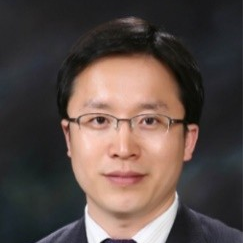2D Energy Materials
A special issue of Energies (ISSN 1996-1073). This special issue belongs to the section "D1: Advanced Energy Materials".
Deadline for manuscript submissions: closed (20 December 2019) | Viewed by 17733
Special Issue Editors
Interests: chemical sensors for e-nose and e-tongue; memristors; plasmonics; metal–insulator transition; and ferroelectricity
Special Issues, Collections and Topics in MDPI journals
Interests: mateirlas growth; low dimenstional materials; x-ray diffraction; physical chemistry
Special Issue Information
Dear Colleagues,
Two-dimensional (2D) materials represent a fast-growing class of materials. After the discovery of atomically thin graphene exfoliated from graphite, 2D materials have undergone rapid development for applications of their unusual electronic, mechanical, chemical, electrochemical, and optical properties. The unique bonding nature of strong in-plane chemical bonding and weak out-of-plane van der Waals interactions allows for the manipulation of the interlayer spacing and surface functional groups through effective nanoscale surface/interficial engineering, resulting in many 2D materials of large in-plane topology and atomic scale thickness. Extensive studies have been carried out on 2D materials with diversified applications, including electronics, sensing, catalysis, energy storage, and energy conversion, etc. In light of the ever-growing demand for electricity storage in stationary and mobile electronic devices and for energy conversion on large and small scales, atomically thin layered structures of electrochemically active 2D materials are considered very attractive for energy storage devices, and those of highly transparent and (semi-)conducting 2D materials for energy conversion devices. Typical 2D materials for energy storage and conversion include graphene, transition metal dichalcogenides, transition metal oxides/hydroxides, transition metal carbides/nitrides (MXenes), and 2D metal–organic frameworks and covalent–organic frameworks. This Special Issue focuses on the synthesis and applications of 2D materials for energy storage and conversion devices.
We cordially invite you to submit manuscripts on all related topics for this Special Issue "2D Energy Materials”. Both theoretical and experimental contributions are welcome.
Prof. Dr. Ho Won Jang
Dr. Hak Ki Yu
Prof. Dr. Hee Jung Park
Guest Editor
Manuscript Submission Information
Manuscripts should be submitted online at www.mdpi.com by registering and logging in to this website. Once you are registered, click here to go to the submission form. Manuscripts can be submitted until the deadline. All submissions that pass pre-check are peer-reviewed. Accepted papers will be published continuously in the journal (as soon as accepted) and will be listed together on the special issue website. Research articles, review articles as well as short communications are invited. For planned papers, a title and short abstract (about 100 words) can be sent to the Editorial Office for announcement on this website.
Submitted manuscripts should not have been published previously, nor be under consideration for publication elsewhere (except conference proceedings papers). All manuscripts are thoroughly refereed through a single-blind peer-review process. A guide for authors and other relevant information for submission of manuscripts is available on the Instructions for Authors page. Energies is an international peer-reviewed open access semimonthly journal published by MDPI.
Please visit the Instructions for Authors page before submitting a manuscript. The Article Processing Charge (APC) for publication in this open access journal is 2600 CHF (Swiss Francs). Submitted papers should be well formatted and use good English. Authors may use MDPI's English editing service prior to publication or during author revisions.
Keywords
- 2D materials for energy storage and conversion
- Graphene, transition metal dichalcogenides/oxides/hydroxides/carbides/nitrides, Mxenes, 2D metal–organic frameworks
- Batteries
- Supercapacitors
- Solar cells
- Fuel cells
- Water splitting
- CO2 reduction
- Thermoelectric
- Energy harvesting.






